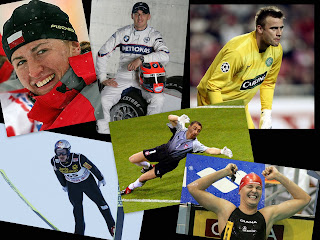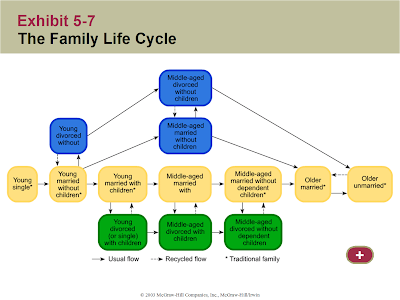
Culture refers to the cumulative deposit of knowledge, experience, beliefs, values, attitudes, meanings, hierarchies, religion, notions of time, roles, spatial relations, concepts of the universe, and material objects and possessions acquired by a group of people in the course of generations through individual and group striving.
Culture is the systems of knowledge shared by a relatively large group of people.
Culture is communication, communication is culture.
More definitions you will find here: http://www.tamu.edu/classes/cosc/choudhury/culture.html

The word "culture" is most commonly used in three basic senses:
•excellence of taste in the fine arts and humanities
•an integrated pattern of human knowledge, belief, and behavior that depends upon the capacity for symbolic thought and social learning
•the set of shared attitudes, values, goals, and practices that characterizes an institution, organization or group.
According to Wikipedia, cultures are externally affected via contact between societies, which may also produce - or inhibit - social shifts and changes in cultural practices. War or competition over resources may impact technological development or social dynamics. Additionally, cultural ideas may transfer from one society to another, through diffusion or acculturation. In diffusion, the form of something (though not necessarily its meaning) moves from one culture to another. For example, hamburgers, mundane in the United States, seemed exotic when introduced into China.
Cultural differences manifest themselves in different ways and differing levels of depth. Symbols represent the most superficial and values the deepest manifestations of culture, with heroes and rituals in between.
•Symbols are words, gestures, pictures, or objects that carry a particular meaning which is only recognized by those who share a particular culture.
•Heroes are persons, past or present, real or fictitious, who possess characteristics that are highly prized in a culture. They also serve as models for behaviour.
•Rituals are collective activities, sometimes superfluous in reaching desired objectives, but are considered as socially essential. They are therefore carried out most of the times for their own sake (ways of greetings, paying respect to others, religious and social ceremonies, etc.).
•The core of a culture is formed by values. They are broad tendencies for preferences of certain state of affairs to others (good-evil, right-wrong, natural-unnatural). Many values remain unconscious to those who hold them. Therefore they often cannot be discussed, nor they can be directly observed by others. Values can only be inferred from the way people act under different circumstances.
•Symbols, heroes, and rituals are the tangible or visual aspects of the practices of a culture. The true cultural meaning of the practices is intangible; this is revealed only when the practices are interpreted by the insiders.
Manifestation of Culture at Different Levels of Depth:

A variable can be operationalized either by single- or composite-measure techniques. A single-measure technique means the use of one indicator to measure the domain of a concept; the composite-measure technique means the use of several indicators to construct an index for the concept after the domain of the concept has been empirically sampled.
Hofstede (1997) has devised a composite-measure technique to measure cultural

differences among different societies:
•Power distance index: The index measures the degree of inequality that exists in a society.
•Uncertainty avoidance index: The index measures the extent to which a society feels threatened by uncertain or ambiguous situations.
•Individualism index: The index measure the extent to which a society is individualistic.
•Masculinity index (Achievement vs. Relationship): The index measures the extent to which the dominant values are assertiveness, money and things (achievement), not caring for others or for quality of life. The other end of the spectrum would be femininity (relationship).

Cultural norms are behavior patterns that are typical of specific groups. Such behaviors are learned from parents, teachers, peers, and many others whose values, attitudes, beliefs, and behaviors take place in the context of their own organizational culture.
This table shows the comparison of cultural norms and values:
http://www.augsburg.edu/education/edc210/norms-values.html
It is interesting to see how different countries celebrate Christmas.

For Americans it is Santa and his reindeer, hot chocolate and candy canes; for
 Egyptians it is feast gifts and fireworks, picnics and sports. All across the globe, Christmas is celebrated with traditions and customs that differ and change according to culture.
Egyptians it is feast gifts and fireworks, picnics and sports. All across the globe, Christmas is celebrated with traditions and customs that differ and change according to culture.Brazil
Father Christmas is called Papai Noel. Many Christmas customs are similar to USA or UK. For those who have enough money, a special Christmas meal will be chicken, turkey, ham, rice, salad, pork, fresh and dried fruits, often with beer. Poorer people will just have chicken and rice.
France
In France, Christmas is always called 'Noël. Everyone has a Christmas tree, sometimes decorated in the old way with red ribbons and real white wax candles. Fir trees in the garden are often decorated too, with lights on all night.
Sweden
The most important day is Christmas Eve. A special Christmas meal is eaten on Christmas Eve - ham (pork), herring fish, and brown beans - and this is the time when families give presents to each other. Many people attend a church meeting early on Christmas Day.
Poland
In Poland people start preparing for Christmas at the beginning of December. On Christmas Eve when the first star appears in the sky people sit at a table. They do not forget about leaving an empty place for an expected guest.
At midnight many people go to church to attend a special mass. 25 December is spent at home. The next day people pay and receive visits. Christmas in Poland is the most familiar, traditional and joyful time.
The most popular dishes are: red borsh with pies, carp: fried or in a jelly, pies with mushrooms, herrings, poppy-seed cake. Before the supper members of the family share the holy wafer, after supper they give each other presents which were put under the Christmas tree.
The rest you can find here: http://www.soon.org.uk/country/christmas.htm
We were talking about stereotypes as well. A stereotype is a preconceived idea that attributes certain characteristics (in general) to all the members of class or set.
 The term is often used with a negative connotation when referring to an oversimplified, exaggerated, or demeaning assumption that a particular individual possesses the characteristics associated with the class due to his or her membership in it. Stereotypes can be used to deny individuals respect or legitimacy based on their membership in that group.
The term is often used with a negative connotation when referring to an oversimplified, exaggerated, or demeaning assumption that a particular individual possesses the characteristics associated with the class due to his or her membership in it. Stereotypes can be used to deny individuals respect or legitimacy based on their membership in that group.Some stereotypes related to UK:
'Men wearing bowler hats, pin striped suite,
a newspaper under the arm and
carrying a long unopen umbrella, double-decker buses cream teas'
'Long shadows on county cricket grounds, warm beer,
invincible green suburbs, dog lovers and
old maids bicycling through the morning mist'
- John Major (Ex Prime Minister )
'Beer, honesty, Bulldog-type, Royal Family, Cricket, the Weather'
- Dickie Bird (Famous English cricket umpire)

After presenting the topic, Ruth divided us into groups and asked to prepare a presentation about one country. In my case – it was Poland :)
First of all, six famous people who come from my country: Lech Wałęsa, Jan Paweł II, Krzysztof Penderecki, Mikołaj Kopernik, Fryderyk Chopin and Maria Skłodowska-Curie

Our favourite food: dumplings (filled with cheese/meat/fruit), special type of cheese made in mountains (I love it!), pickled cucumbers and sauerkraut stew.

Then our national sport. I think it is volleyball and maybe skiing.

The most popular Polish sportsmen:

When it comes to religion, Poland is predominantly Catholic. Nine out of every ten Poles belong to the Catholic church, and the majority—over sixty percent—attend church regularly.
Typical Polish TV advert which reflects the national character is Knorr advert:
One of songs Polish people are proud of:
Polish best newspaper: Gazeta Wyborcza, in English - Electoral Newspaper:

And this is the trailer of the film you should definitely watch: KATYŃ. It is very short but really moving. (this trailer is with English subtitles)
The film was made by Andrzej Wajda, Polish film director, recipient of an honorary Oscar
It is worth seeing, isn’t it?
I read some interesting chapters from book written by Morris Desmond: People Watching. Body language is very interesting topic, unfortunately very extensive as well. That is why I copied only one page... It is something we were talking about during the lecture :)

To find out more you can always read this book ;)















